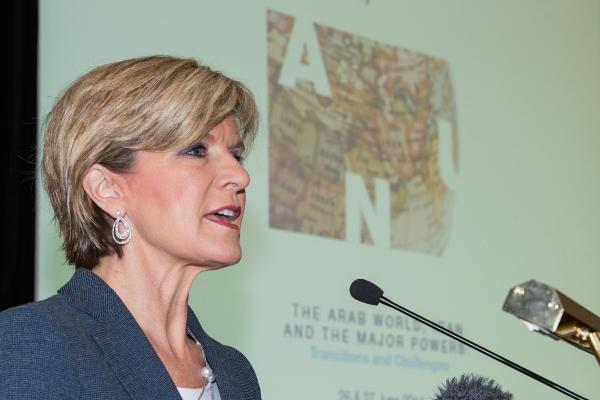 The book, Iran and the Arab World: A turbulent region in transition, edited by Amin Saikal, is the proceeds of a conference held at ANU in 2014. The conference brought together renowned international scholars to discuss the key issues that influence the events of this turbulent region. The book contains a forward by The Hon. Julie Bishop, the Minister for Foreign Affairs. In the forward, Ms Bishop noted, 'This collection of papers will be a valuable resource for academics and policymakers.' She also acknowledged the conference marked the twentieth anniversary of the Centre for Arab and Islamic Studies, which she said, 'has played a leading role in academic and public policy debate about Australia's engagement with the Middle East and Central Asia'.
The book, Iran and the Arab World: A turbulent region in transition, edited by Amin Saikal, is the proceeds of a conference held at ANU in 2014. The conference brought together renowned international scholars to discuss the key issues that influence the events of this turbulent region. The book contains a forward by The Hon. Julie Bishop, the Minister for Foreign Affairs. In the forward, Ms Bishop noted, 'This collection of papers will be a valuable resource for academics and policymakers.' She also acknowledged the conference marked the twentieth anniversary of the Centre for Arab and Islamic Studies, which she said, 'has played a leading role in academic and public policy debate about Australia's engagement with the Middle East and Central Asia'.
This volume focuses on interpreting the changing domestic and regional dynamics in the Arab world and Iran. Its chapters discuss an array of countries, events, actors, and issues - from an examination of the Arab Spring and the Tunisian democratic transition, to an exploration of the role of Saudi-Iranian geostrategic rivalry, to the impact of ethnic and sectarian politics in Syria, Iraq, and across the region.
Chapters from expert contributors are organized into three parts. The first section of the volume covers the aspects and dynamics of change in the Arab world. The second examines the role of Islam, Islamism, Islamic governance, and sectarian and ethnic politics in the region. The third section focuses on Iranian domestic and regional politics. Yet the theme of transition is constant throughout as this multidisciplinary book draws connections across countries and events to not only inform about the prevailing regional situation, but also to invite readers to draw their own conclusions as to the future of the Middle East.
Collectively the volume provides a fresh interpretation of the changing dynamics of the Arab world and Iran, unpacking the complexities of the disputes, conflicts, rivalries, failed goals, and processes of change and development that have made the Muslim Middle East so turbulent, directionless, and perpetually contested by both regional and international actors.
Chapters:
The Middle East and North Africa: An Arena of Change and Transition? Amin Saikal
Prospects for Democratization in the Middle East Post-Arab Spring, Fethi Mansouri
The Post-uprising Arab World and the West: Mythology and Cultural Challenges, Robert Bowker
Political Economy Dynamics in the Arab Gulf States: Implications for Political Transition, Matthew Gray
Islam, Islamism, Muslims, and Governance: Beyond “Islam and Democracy”, Hisham Hellyer
The Saudi, Raihan Ismail
Sectarian and Ethnic Politics: The Syrian Conflict, Minerva Nasser-Eddine
Iran’s Syrian Foreign Policy Objectives, Shahram Akbarzadeh
Iran’s Relations with Afghanistan’s National Unity Government, Bruce Koepke
Iranian–Saudi Relations in a Changing Regional Environment, Amin Saikal